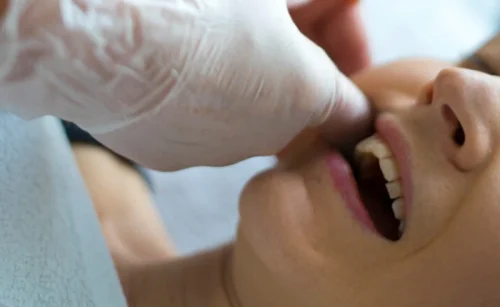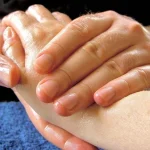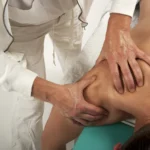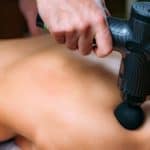If you’re looking for quick relief from jaw pain, then you’ll want to learn how to massage your jaw. Massaging your jaw can help relieve tension and pain in the jaw muscles, making it a great way to quickly reduce discomfort. In this article, we will explain how to massage your jaw for quick pain relief. We will discuss the different techniques and explain what areas of your jaw to focus on. You’ll also learn the benefits of jaw massage and how often you should do it. Read on to find out more!
Table of Contents
How to Massage Your Jaw
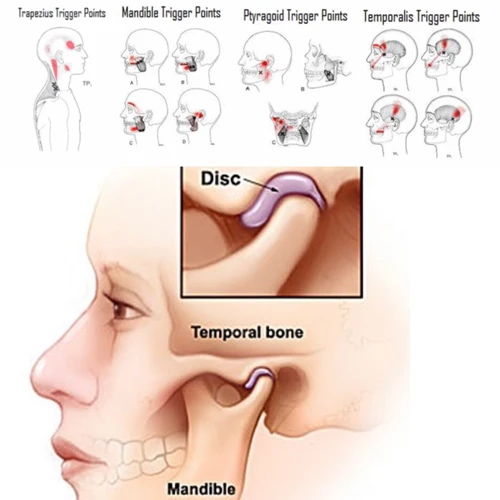
General Jaw Massage Techniques
To begin, start by rubbing your lower jaw in a circular motion with your fingertips. This will help to relax and loosen the jaw muscles. Move your hands to your cheeks, and massage in a gentle circular pattern. If you feel any pain, stop and focus on that area. You should work your way up to the temple area on either side of your head.
Massage Techniques for TMJ
For those suffering from temporomandibular joint (TMJ) pain, massaging the area can provide quick relief. To begin, place your index and middle fingers on either side of the jaw joint and apply gentle pressure in a circular motion. This will help to relax your jaw muscles and reduce pain.
Massage Techniques to Prevent Clenching Teeth at Night
If you are prone to clenching your teeth at night, massage can help alleviate this habit. Start by gently massaging your jaw muscles and the muscles on either side of your head. If you feel any tension, focus on that area and apply pressure with your fingertips. You can also use your thumbs to press firmly against the jaw joint and massage in an up and down motion.
Massage Techniques to Relieve TMJ Pain
If you are experiencing TMJ pain, you may want to incorporate massage into your treatment plan. Start by placing your index and middle fingers on either side of the jaw joint and apply gentle pressure in a circular motion. You can also use your thumbs to press firmly against the jaw joint and massage in an up and down motion.
Massage Techniques for Teeth Grinding
Teeth grinding can also lead to jaw pain, so it is important to address this habit as soon as possible. Begin by placing your index fingers on either side of your jaw and apply gentle pressure in a circular motion. Then use your thumbs to press firmly against the jaw joint and massage in an up and down motion.
Massage Techniques for Lockjaw
If you have lockjaw, massage can help to ease the discomfort. Start by rubbing your lower jaw in a circular motion with your fingertips. Then move your hands to your cheeks and massage in a gentle circular pattern. If you feel any pain, stop and focus on that area.
Massage Techniques for Cheek Muscles
Finally, you can massage your cheek muscles to reduce tension and increase blood flow. Begin by placing your index fingers on either side of your jaw and apply gentle pressure in a circular motion. Then use your thumbs to press firmly against the jaw joint and massage in an up and down motion. You can also use your thumbs to massage the muscles on either side of your head.
Massaging your jaw can provide quick relief from pain and discomfort related to TMJ, clenching teeth, teeth grinding and lockjaw. Incorporate these massage techniques into your daily routine to keep your jaw healthy and comfortable.
Safety Considerations
When massaging your jaw for TMJ pain relief, it is important to take certain safety precautions to ensure that you don’t cause any further harm to your jaw. Make sure to apply only gentle pressure when massaging, and avoid pressing too hard or pressing in any one spot for more than a few seconds. Avoid any jerky or rapid movements, as this can cause further strain on your jaw. If you experience any pain or discomfort while massaging, stop immediately and consult your doctor. Additionally, it is important to seek medical advice before attempting any kind of massage therapy if you have a history of jaw pain or any type of TMJ disorder.
Frequently Asked Questions
What type of massage can I use to relieve jaw pain?
A massage technique called myofascial release can be used to relieve jaw pain. This technique involves applying pressure to the fascia, the thin membrane that covers the muscles and other connective tissue in the jaw. This technique helps to relax the muscles in the jaw and can help reduce associated pain. Other massage techniques such as trigger point massage and Swedish massage can also be used to help relieve jaw pain.
How often should I massage my jaw to get relief?
It depends on the severity of the pain and the cause of the pain. Generally, it is recommended to massage the jaw 2-3 times a day, for 5-10 minutes at a time. It is important to pay attention to the intensity of the massage, as too much pressure can cause more pain. The massage should also be done gently and slowly. Additionally, it is important to stay consistent and find the right combination of massage and relaxation techniques that work best for you.
Is There a Specific Technique I Should Use When Massaging My Jaw?
Massaging your jaw can be an effective way to reduce pain and tension in that area. To ensure the best results, it is important to use the right massage technique. Start by placing your hands on either side of your jaw and gently massaging the muscles and tissue. Use circular motions going up and down the jawline. You can also use your thumbs to press and release the area, allowing for deeper penetration. Additionally, applying pressure with your fingertips and knuckles can help relieve tension in the jaw. Finally, to reduce tension headaches, try using your fingertips to massage the temples.
Are there any risks associated with massaging my jaw?
Yes, there are risks associated with massaging your jaw. These include:
- Increased pain and discomfort if done incorrectly
- Stretching the muscles too much
- Inflammation of the muscles
- Tissue damage or irritation
- Irregularities in the jaw joint
It is important to follow the instructions provided and to be gentle when massaging your jaw. Massaging too hard or too often can result in serious injury. If any pain or discomfort is experienced during the massage, it is important to stop immediately and seek medical advice.
Can Massage Provide Long-Term Relief from Jaw Pain?
- Reduce tension: Massage can help to reduce tension in the jaw muscles by targeting the trigger points and breaking up knots. This can help to reduce stress that can lead to jaw pain.
- Increase blood flow: Massage can increase blood flow to the jaw area, helping to increase oxygen and nutrient supply to the muscles, which can help to alleviate pain.
- Release endorphins: Massage releases endorphins, which are the body’s natural painkillers. This can help to reduce jaw pain and provide long-term relief.
- Improve posture: Massage can help to improve posture by strengthening the muscles in the jaw and neck area, which can help to reduce jaw pain.
- Reduce inflammation: Massage can help to reduce inflammation in the jaw, which can help to reduce pain and provide long-term relief.
Massage can provide long-term relief from jaw pain. It can help to reduce tension, increase blood flow, release endorphins, improve posture, and reduce inflammation. These benefits can help to alleviate pain and provide long-term relief.
Conclusion
Jaw massage is a great way to relieve tension and pain in the jaw area quickly. It can be done with the fingers or a massage tool, and is best done for five minutes daily. Consult a doctor if the pain persists for more than a few days.
📚 References
⚠️ Disclaimer:
This article is for informational purposes only and does not constitute medical advice. Always consult with a licensed healthcare provider or certified massage therapist before beginning any new treatment, especially if you have pre-existing health conditions or concerns.

